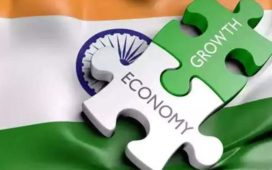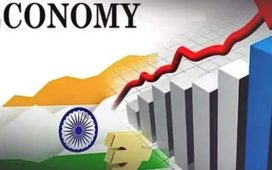
The Central government has decided to make available kitchen essentials, especially TOP, at subsidised prices to consumers by opening retail stores at major metro stations in Delhi this month, ET has reported based on information from a senior government official. If the project is successful, the government plans to extend it to other cities like Mumbai, Chennai and Bengaluru which have metro rail networks, the official said.
The sizzling TOP trouble
The increase in prices of onions and tomatoes pushed up the cost of vegetarian and non-vegetarian thalis by 10% and 5% respectively in November over the previous month, as per a Crisil report. There was an increase of 58% and 35% in prices of onions and tomatoes respectively in November over October, prompted by festive demand and lower output in Kharif season due to erratic rainfall conditions, the report said.
There has been damage to the onion crop in places such as Nashik and Ahmednagar due to the recent hailstorms in Maharashtra in the last few weeks. The arrivals (of onions to mandis), which should have peaked at this time of the year, have declined. This is pushing the prices up. The delay in kharif onion sowing due to unfavourable weather has resulted in less coverage and the late arrival of the onion crop. With stored rabi onions (harvested in April-May) getting exhausted and delay in the arrival of kharif onion, there is a tight supply situation, resulting in the price increase.
As per the Crisil reprot, prices of pulses, which account for around 9% of the total cost of veg thali, also increased 21% in November 2023 compared to the same period last year. Inflation had declined to 4.9% in October, according to data released last month, but food inflation remained unchanged at 6.6%.
“Food inflation will continue to be under pressure, and I believe that 6% inflation can prevail over the next three months,” Madan Sabnavis, chief economist at Bank of Baroda, told ET recently. “Rabi sowing is lagging and low reservoir levels can impact final crop outcomes,” he said.
The pressure on food prices is expected to intensify after the central part of the country – the core agricultural zone – saw a 682% increase in rainfall over the long-period average during November 23 to November 29, according to the India Meteorological Department. The unseasonal hailstorm and rains caused large-scale damage to a large portion of tur crop and onion crop, agriculture experts said.
Volatility in vegetable prices has increased in the last four years not just because of weather-related events but demand-supply mismatches, causing a problem for consumers, farmers and policymakers, according to a Crisil report released last month. The report highlighted that potatoes, onions and tomatoes were the primary reason for the volatility in food prices, rising 9.1% on average during this period, compared with 4.8% annual inflation for other vegetables. Tomatoes, onions and potatoes account for a 5% share of India’s food basket.
The high prices of tomatoes was one of the reasons for the vegetable price shock, which drove retail inflation to a 15-month high of 7.4% in July and 6.8% in August. Inflation eased to 5% in September as tomato prices declined.
How govt plans to keep TOP stable
Before the government decided to sell the staples at metro stations, it had initiated unique measures to keep TOP, pulses, rice and wheat flour prices under check.
To control the price rise in onion, the Centre started retail sale of onions at a subsidised rate of Rs 25 per kilogram last month. At that time, onion was being sold in Delhi at around Rs 60 per kg by e-commerce platforms. The central government is pushing the sale of onion through National Cooperative Consumers’ Federation (NCCF), the National Agricultural Cooperative Marketing Federation of India Ltd. (NAFED), Kendriya Bhandar, and other state-controlled cooperatives.
Mobile vans have also been launched for sale of onion. Kendriya Bhandar stores and Mother Dairy Safal stores are also selling onion at Rs 25 per kg. The Hyderabad Agricultural Cooperatives Association (HACA) has also been roped in for retail sale of onions to consumers.
In August the government raised the quantum of onion buffer to 5.00 lakh metric tonne this year, after achieving the initial procurement target of 3.00 lakh metric tonne. NCCF and NAFED will procure 1.00 lakh tonne each to achieve the additional procurement target. Later it further raised the procurement by another 2 lakh tonne to 7 lakh tonne.
Apart from onion, the central government has also taken steps to control prices of Atta and dal. The government has launched Bharat Atta and Bharat Dal at a subsidized price of Rs 27.5 per kg and Rs 60 per kg. Bharat Dal and Atta are made available for retail consumers through NAFED, NCCF, Safal and some controlled cooperatives. By early last month, NAFED had set up 329 retail points, consisting of stationary outlets and mobile vans, in 55 cities across 21 states. Similarly, NCCF had set up 457 retail points in 54 cities across 20 states. More such initiatives are likely.
Distribution of kitchen staples by the government helps in stemming sudden price hikes due to hoarding or supply chain problems. It is likely that the government will extend this initiative beyond elections because food inflation, which makes up nearly half of the overall inflation, is a perennial problem.
The Crisil report pointed out that one reason for perennial food inflation was the production of vegetables not keeping pace with their demand. Vegetable production grew 1.6% between FY14 and FY23, compared with 2.6% growth witnessed in the previous decade. “A larger base, plus the impact of more frequent and intense weather shocks, have slowed production growth,” it said.
The research said that while the country needed to move to more hybrid varieties to increase yield, the country also required investment in post-harvest infrastructure to increase efficiencies and stem wastage and short-term policy interventions to ease prices. The government had announced Operation Greens to improve vegetable supply and create infrastructure in 2019, but Crisil said that the scheme would take time to bear fruit.











